40 cross section of leaf diagram
A cross-section through a leaf Features of leaves and their functions. Feature Function; Large surface area: Maximise light absorption: Thin: Short distance for carbon dioxide to diffuse into leaf ... The veins of leaves are made primarily of vascular tissue, surrounded by parenchymal pith and collenchyma. An upper layer of xylem transports water and minerals from the roots and stem into and throughout the leaves. Recall that xylem is made of dead cells, with heavily thickened but pitted cell walls.
2. Sheathing Leaf Base: In many plants the leaf base expands into a sheath which partially or wholly clasps the stem. This sheathing leaf base is of frequent occurrence among monocotyledons. The sheathing leaf base encloses the stem for some distance above the node (Fig. 4 .2-C). Some important examples are Zea mays, sugarcane, wheat, banana etc.

Cross section of leaf diagram
avoiding the region which has become deeply stained with the dye. Then cut a thin cross section to view under microscope. 6. Examine the cut surface of the stem with a hand lens/microscope and make a simple outline diagram to show the distribution of dye in the stem. 7. The leaf cross-section diagram can allow a student to have an idea about the structure of the leaves and the function of the cells present in them. It is easier to learn with the help of a diagram. The students can draw by hand, but the process is long and complicated. The students may not get satisfactory results. Download scientific diagram | Schematic transverse section through a dicotyledon leaf indicating the arrangement of tissues. Chloroplasts are drawn in one ...
Cross section of leaf diagram. Start studying cross section of leaf (tissues). Learn vocabulary, terms, and more with flashcards, games, and other study tools. A cross-section through a leaf Features of leaves and their functions. Feature Function; Large surface area: Maximise light absorption: Thin: Short distance for carbon dioxide to diffuse into leaf ... Schematic transverse section through a dicotyledon leaf indicating the scientific diagram transverse section of a leaf diagram quizlet class 7 science diagram of a section leaf you draw a labelled diagram of cross section leaf lamina to show chloroplasts from science life processes class 10 cbse. Whats people lookup in this blog: A leaf's cross-section gives a view of four layers of a leaf, upper epidermis, palisade layer, spongy layer, and lower epidermis. Here is a biology diagram of the cross-section of a leaf. The student can see the chloroplast's presence in the leaf's palisade layer, where most photosynthesis occurs. The leaves also have a stoma that controls the water content.
42) The following diagram is of a cross section of a plant leaf. Use the diagram to answer the question. The main function associated with structure X is _____. A) absorption of carbon dioxide B) retention of water C) collection of light D) release of carbon dioxide Answer: Evoke the excitement of exploration with this Edraw leaf cross section science diagram template. Check for more insights of every cell unit of a leaf. More scientific diagram materials are waiting for your in the free download version. Lab Apparatus List. 64705. 211. Plant Cell Diagram. 19550. 173. Heart Diagram. 18806. 156. Leaf Anatomy Coloring. The leaf is the primary photosynthetic organ of the plant. It consists of a flattened portion, called the blade, that is attached to the plant by a structure called the petiole. Sometimes leaves are divided into two or more sections called leaflets. Leaves with a single undivided blade are called simple, those with two or ... Leaf Cross Section Quiz •Draw a diagram of a leaf cross section and label the 8 parts. II. Food-making in plants *Sun provides energy plants need to make food A. Chloroplast 1. Green, oval structures 2. Contain chlorophyll a) Uses suns energy to make food b) Makes plants green
Leaf Cross Section Diagram Label Me! Printout Read the definitions then label the cross section of the leaf. Answers: Leaf Structure and Function: Printable Read-and-Answer Worksheet A printable worksheet on leaves, with a short text, a cross section of a leaf to label, and questions to answer. Or go to the answers. Diagram showing the cross-section of a leaf . How photosynthesising cells obtain carbon dioxide . Pathway of carbon dioxide from atmosphere to chloroplasts by diffusion: atmosphere → air spaces around spongy mesophyll tissue → leaf mesophyll cells → chloroplast . Extended Only Adaptations of Leaf for Photosynthesis. These leaves are acicular in shape and are more or less rounded in cross-section. Thus they do not possess two epidermal layers. The differentiation of tissues into epidermal, ground and vascular is clear. A transverse section through a leaf of onion (Alliumcepa of family Liliaceae) would show the following internal structure (Fig. 623): how to draw the diagram of cross section of a leaf class x. how to draw the diagram of cross section of a leaf class x.
The Internal Structure of a Leaf Diagram below is a cross section of a dicotyledonous leaf that shows all the different tissues that make up the leaf. The leaf consists of three main sections: o The epidermis o The mesophyll o The vascular bundles 1. The Epidermis An upper and lower surfaces of the leaf are covered
CROSS SECTION OF A LEAF Name ei the following parts of the leaf in the diagram below. Give the purpose/function of lower epidermis upper epidermis patisade layer cuticle stomate guard cells vein (fibrovascular bundle) spongy layer air space xylem phloem chloroplasts mesophyll Onstructional Pct , F8765 a. b h.
1. Below is a diagram of a cross section through a leaf. Label the structures discussed above. 2. Examine the prepared slide of a cross section through a leaf under the compound microscope. Draw a neat, clear diagram of your specimen in the space below. Find all of the structures illustrated above and label them. 3.
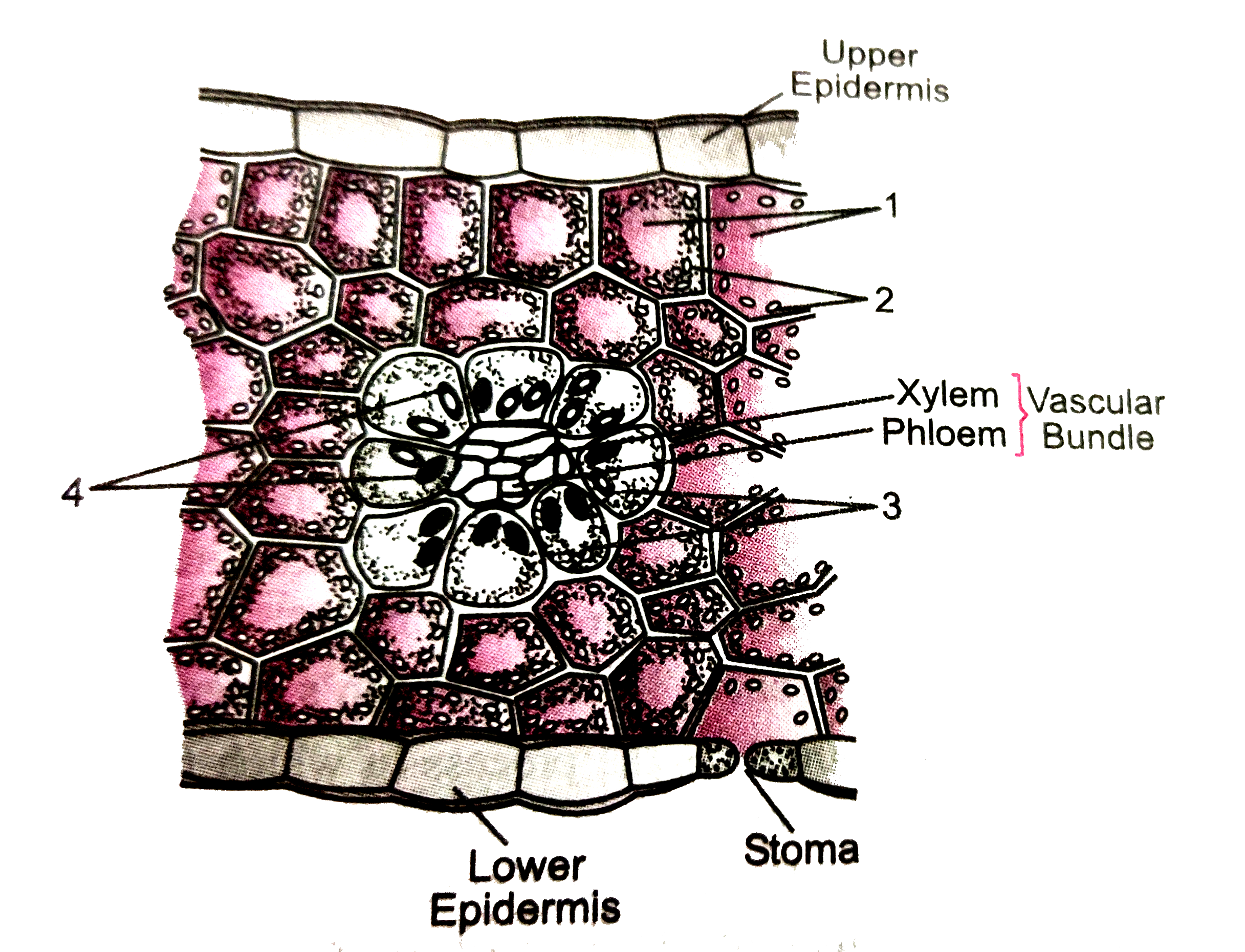
A Portion Of Cross Section Of Leaf Is Shown In The Diagram Answer The Following A Label 1 To 4 B What Kind Of Anatomy Is Shown In The Diagram C
Biology Diagram for CBSE class 10. The cross section of a leaf is divided into three main parts namely, the epidermis, mesophyll and the veins. Epidermis is divided into two types - upper epidermis and lower epidermis. Mesophyll is the inner tissue (parenchyma) of a leaf, containing many chloroplasts. Veins provides support to the leaf and ...
3D Leaf Cross Section Template A free customizable Edraw project timeline template is provided to download and print. Quickly get a head-start when creating your own Edraw project timeline.
Diagram of leaf structure. Note the arrangement of tissue layers within the leaf. Image from Purves et al., Life: The Science of Biology, 4th Edition, by Sinauer Associates (www.sinauer.com) and WH Freeman (www.whfreeman.com), used with permission. Cross-section of a stained leaf of Syringia.
Cross-section of a leaf . Asked by | 8th Apr, 2008, 09:51: PM. Expert Answer: The outermost Cuticle is a waxy layer that covers the epidermis of some leaves and reduces water loss. Upper and Lower Epidermis are the surface layers of a leaf that protects the inner parts of the leaf. They form the outer layer of the skin
New version of this video: https://youtu.be/_y-HCi7mJjMThis is a description of a leaf cross section at the cellular level. Leaves contain a number of differ...
CROSS SECTION OF A LEAF. Cuticle: A waxy layer that prevent water loss by evaporation. The cuticle is transparent and very thin to allow maximum light penetration. Upper Epidermis: A protective layer of cells that produces the cuticle. The epidermis is is also transparent and very thin to allow maximum light penetration.
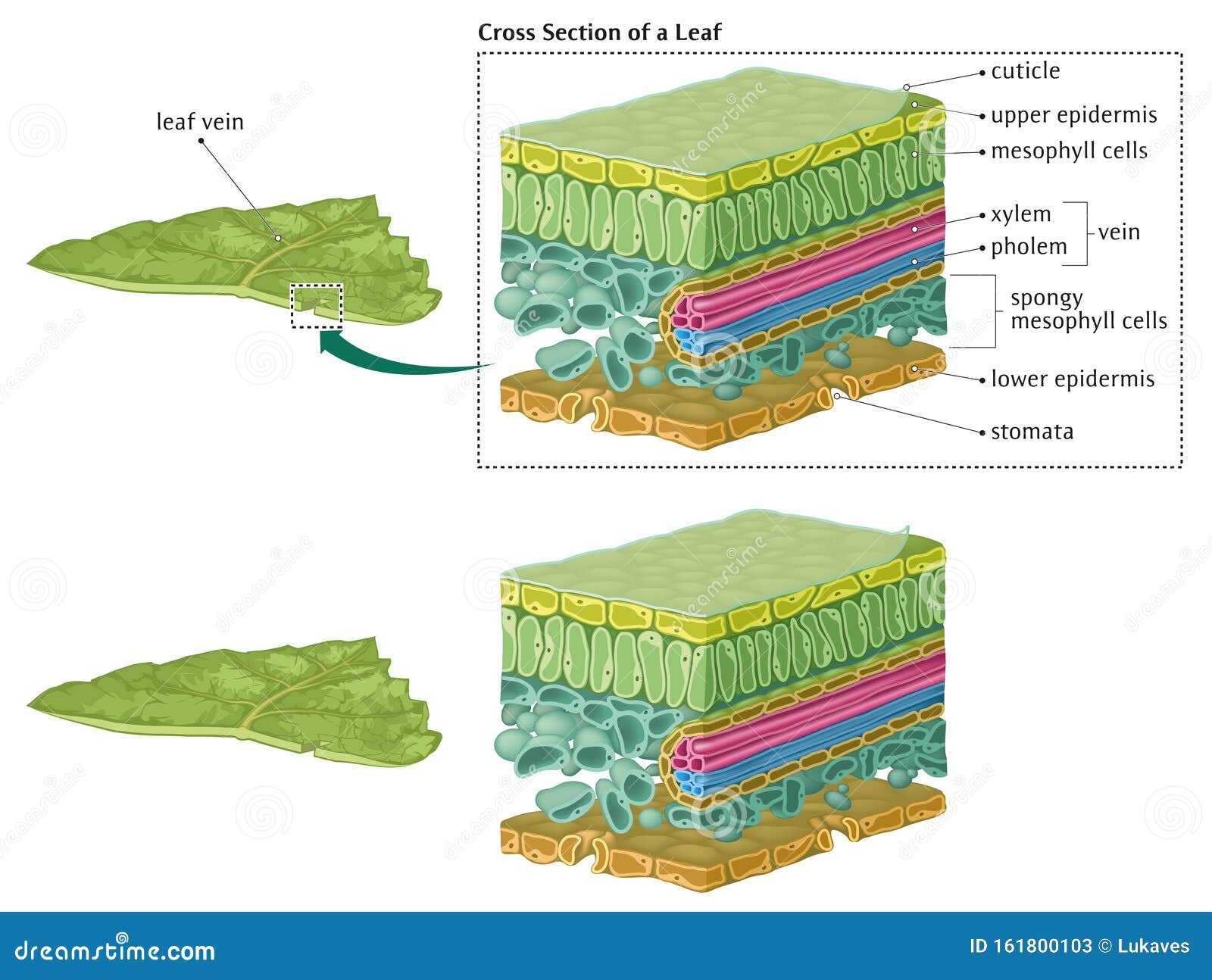
Cross Section Leaf Stock Illustrations 1 432 Cross Section Leaf Stock Illustrations Vectors Clipart Dreamstime
Cross-section of a dorsiventral (bifacial) leaf. The diagram above shows the blade (lamina) of a dorsiventral leaf in cross-section, with layered tissues. The uppermost and lowermost layers are the epidermis; the epidermis is covered by a cuticle and has stomata (pores) with guard cells that can open and close the pores.
Left: Diagram of a leaf, with the petiole (stalk) and veins in purple; the entire expanded portion of the leaf in which the veins are embedded is the blade. The dotted line indicates where the leaf would be cut to make a cross-section. Right: Cross section of leaf blade showing the vascular bundles embedded in the mesophyll.
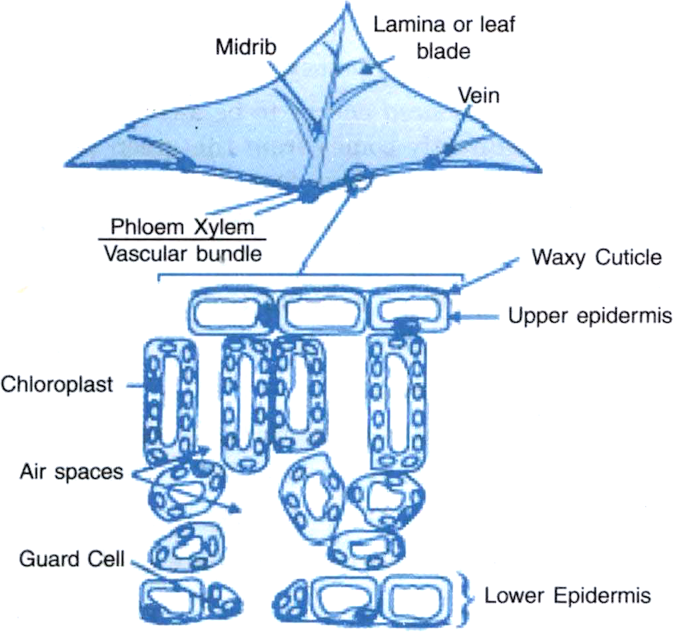
Draw A Labelled Diagram Of Cross Section Of A Leaf Lamina To Show Chloroplasts From Science Life Processes Class 10 Cbse
Leaf Cross Sections Diagram Printout. air space - intercellular gaps within the spongy mesophyll. These gaps are filled with gas that the plant uses (carbon dioxide - CO 2) and gases that the plant is expelling (oxygen - O 2, and water vapor). cuticle - the waxy, water-repelling layer on the top and bottom surfaces of a leaf; it helps keep the leaf from dying out (and protects it from invading ...
Download scientific diagram | Schematic transverse section through a dicotyledon leaf indicating the arrangement of tissues. Chloroplasts are drawn in one ...
The leaf cross-section diagram can allow a student to have an idea about the structure of the leaves and the function of the cells present in them. It is easier to learn with the help of a diagram. The students can draw by hand, but the process is long and complicated. The students may not get satisfactory results.
avoiding the region which has become deeply stained with the dye. Then cut a thin cross section to view under microscope. 6. Examine the cut surface of the stem with a hand lens/microscope and make a simple outline diagram to show the distribution of dye in the stem. 7.
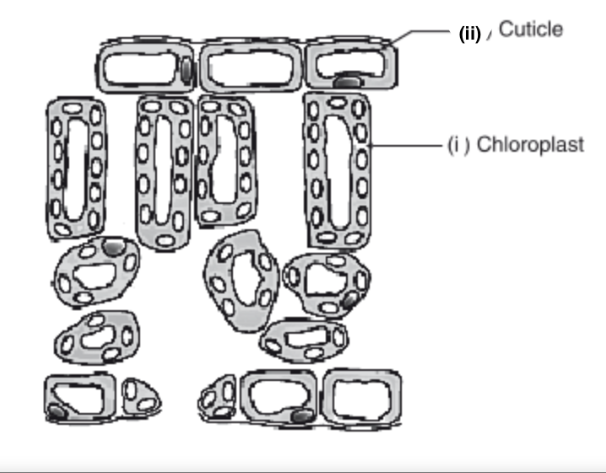
Draw The Diagram Of Cross Section Of A Leaf And Label The Following Parts I Chloroplast Ii Cuticle Snapsolve


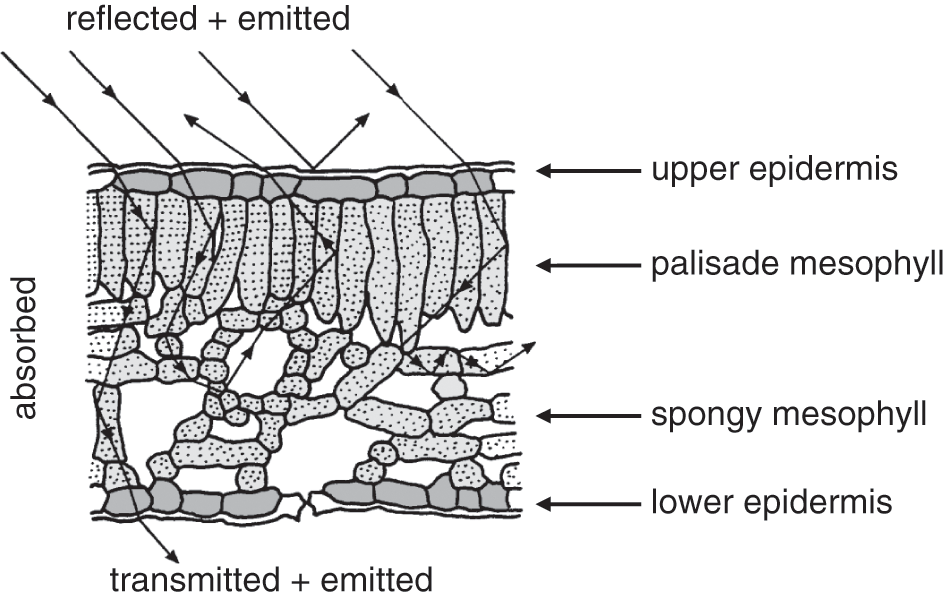

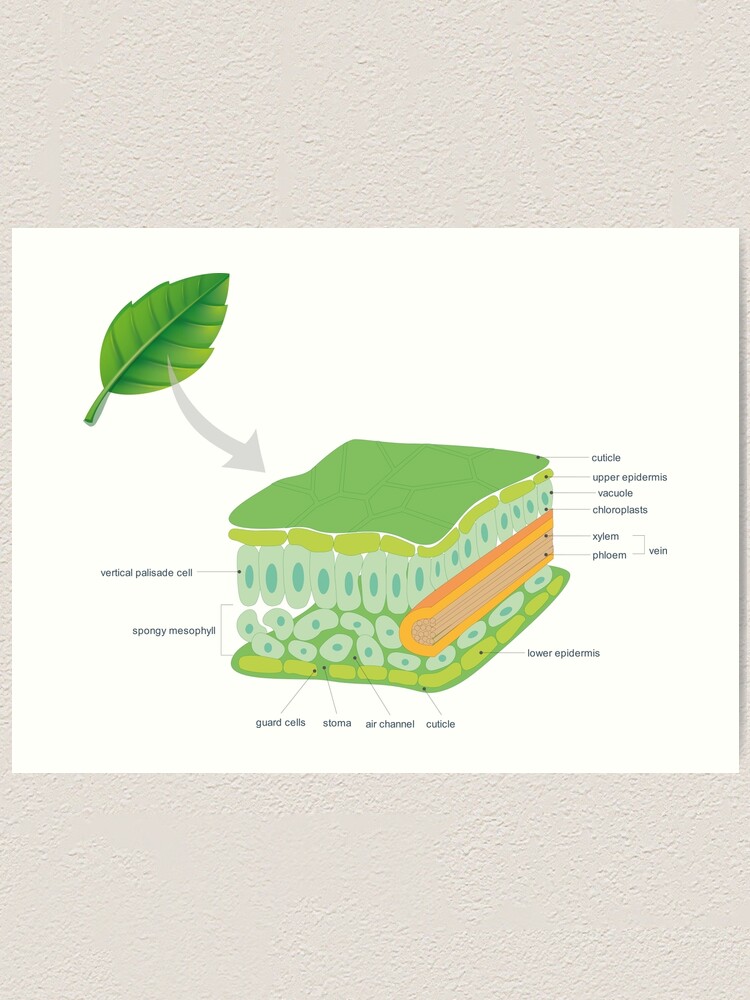




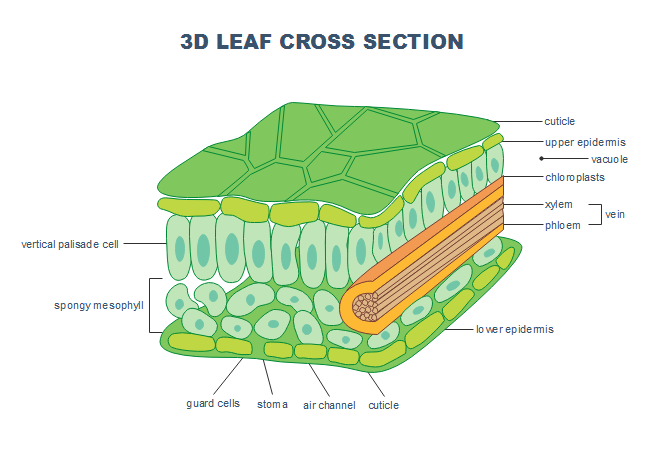
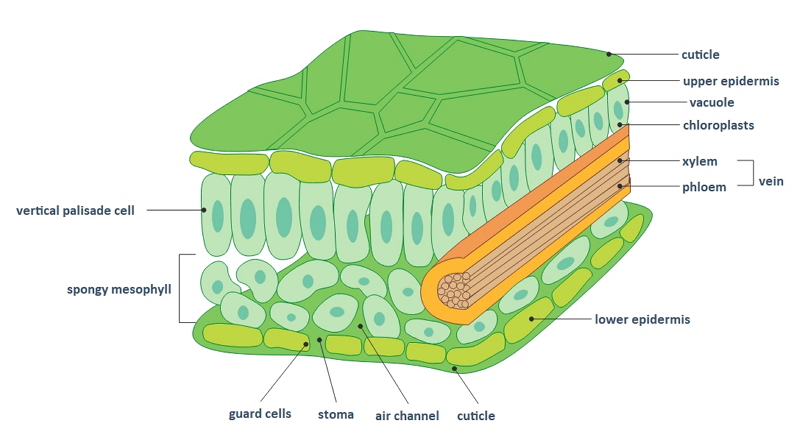

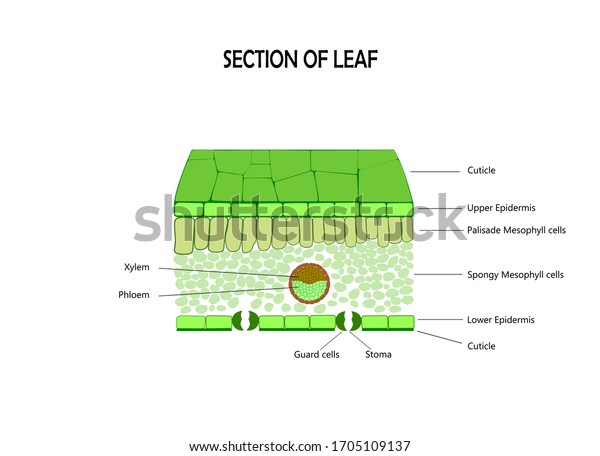


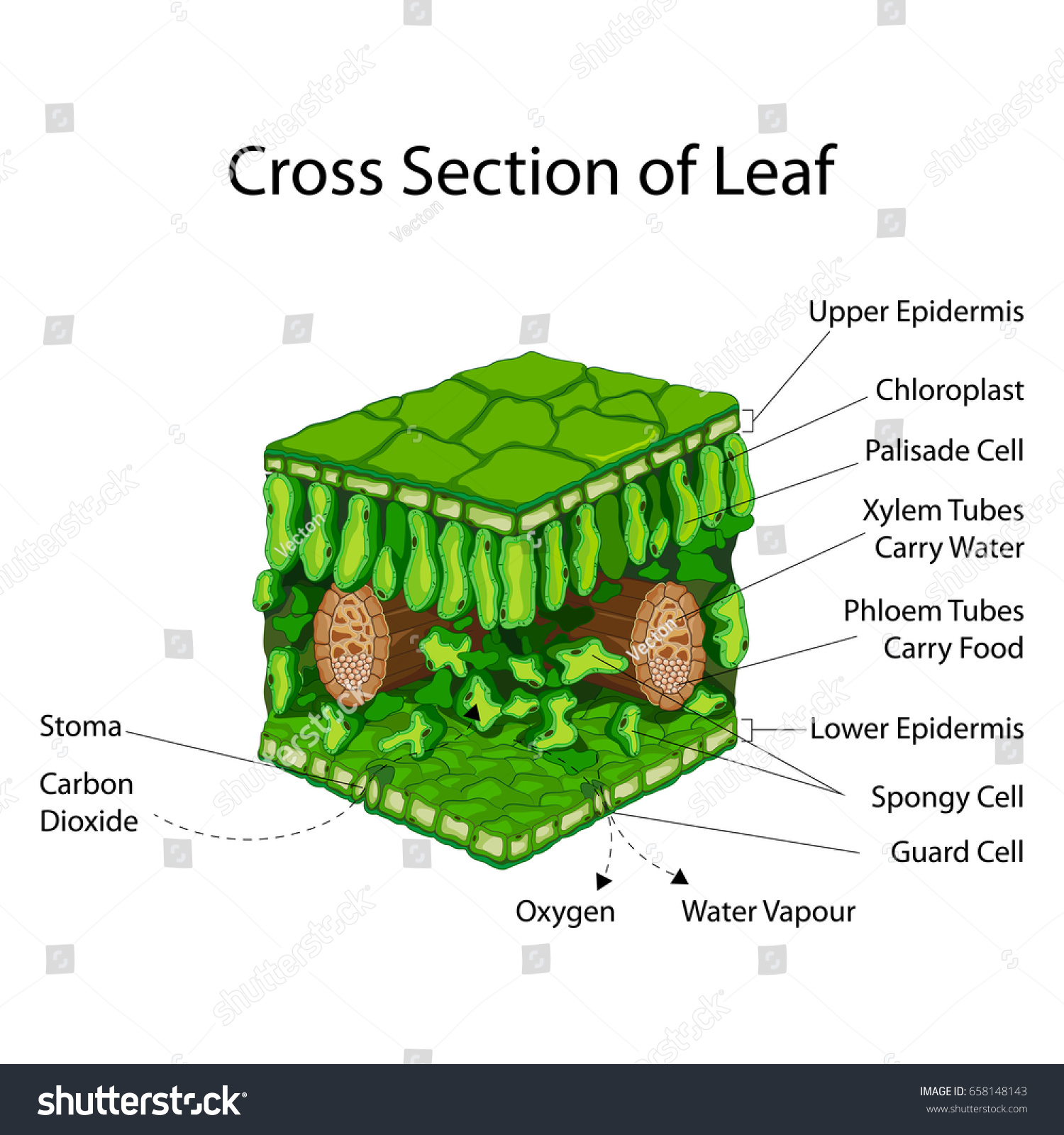
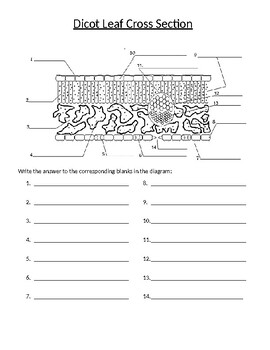
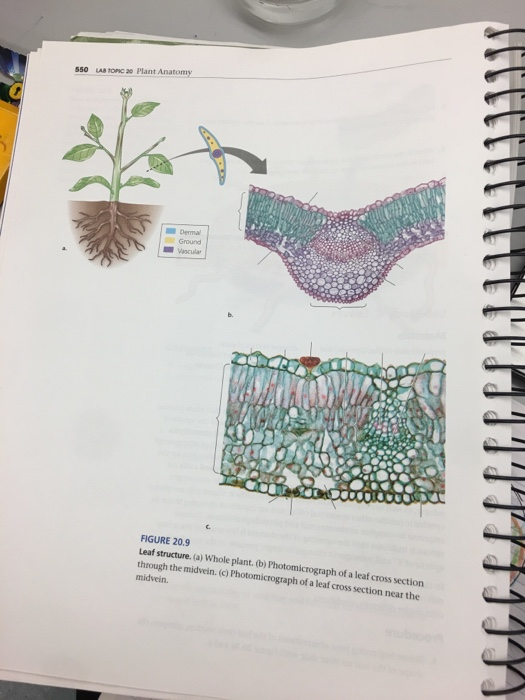
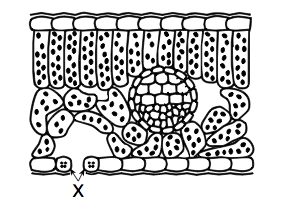

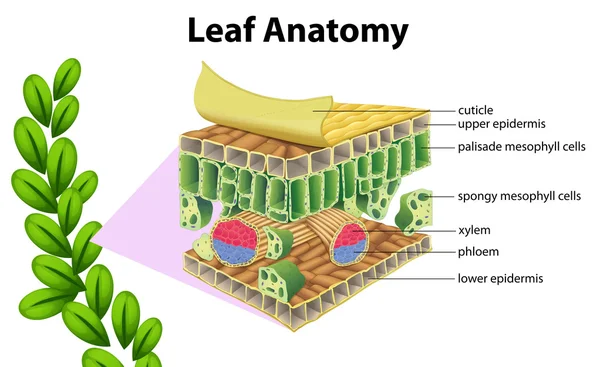

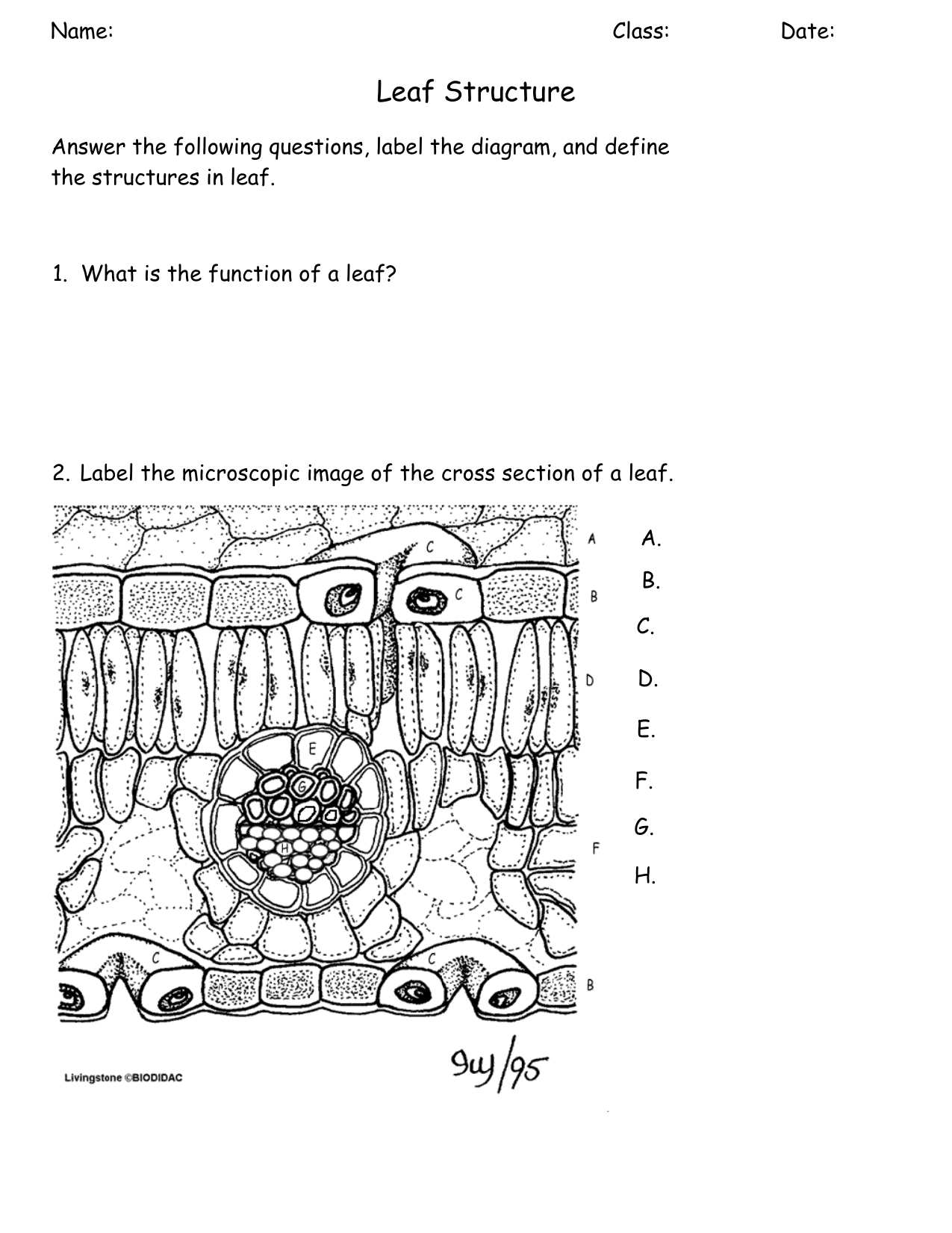





Comments
Post a Comment